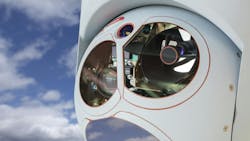C-PHY v3.0 Adds Encoding Option for Next-Gen Image Sensors
What you'll learn:
- What’s in the new version of the MIPI C-PHY specification?
- Several enhancements for developing image sensors.
The MIPI Alliance recently introduced C-PHY v3.0, an updated specification that incorporates a new encoding option to support the next generation of image sensors. The latest version, aimed at the mobile device, automotive, and UAV industries, looks to provide increased flexibility and efficiency in high-performance imaging systems. The new specification is designed to improve data flow and support advanced camera features, allowing for the development of more advanced imaging technologies.
Version 3.0 provides support for an 18-Wirestate mode encoding option, increasing the maximum performance of a C-PHY lane by 30% to 35%. It also provides up to 75 Gb/s over a short channel, bolstering growing demands for ultra-high-resolution image sensors.
Several enhancements in the specification for developing imaging sensors include a 32b9s encoding option that transports 32 bits over nine symbols while maintaining low electromagnetic interference (EMI) and low-power properties. Furthermore, it supports the MIPI Camera Serial Interface 2 (MIPI CSI-2) and MIPI Display Serial Interface 2 (MIPI DSI-2) platforms in low-power, high-speed applications for traditional interconnect lengths utilized in mobile, PC and IoT applications.
"C-PHY is MIPI's ternary-based PHY for smartphones, IoT, drones, wearables, PCs, and automotive cameras and displays," said Hezi Saar, chair of MIPI Alliance. "It supports low-cost, low-resolution image sensors with fewer wires and high-performance image sensors in excess of 100 Mpixels. The updated specification enables forward-looking applications like cinematographic-grade video on smartphones, machine-vision quality-control systems, and ADAS applications in automotive."
About the Author
Cabe Atwell
Technology Editor, Electronic Design
Cabe is a Technology Editor for Electronic Design.
Engineer, Machinist, Maker, Writer. A graduate Electrical Engineer actively plying his expertise in the industry and at his company, Gunhead. When not designing/building, he creates a steady torrent of projects and content in the media world. Many of his projects and articles are online at element14 & SolidSmack, industry-focused work at EETimes & EDN, and offbeat articles at Make Magazine. Currently, you can find him hosting webinars and contributing to Electronic Design and Machine Design.
Cabe is an electrical engineer, design consultant and author with 25 years’ experience. His most recent book is “Essential 555 IC: Design, Configure, and Create Clever Circuits”
Cabe writes the Engineering on Friday blog on Electronic Design.

